In today’s fast-paced digital landscape, understanding the importance of marketing effectiveness is crucial for any business aiming for growth and sustainability. Effectively measuring your marketing activities allows you to determine what strategies work best and which areas require improvement. By asking yourself how will you measure the effectiveness of your marketing activities, you can gain invaluable insights that drive your business decisions.
Here are some key reasons why measuring marketing effectiveness is essential:
- Resource Optimization: Understanding what yields the best results helps allocate resources more efficiently, ensuring that time and budget are spent wisely.
- Enhanced Customer Insights: Tracking marketing performance provides deeper insights into customer behavior, preferences, and trends, enabling more personalized marketing approaches.
- Informed Decision-Making: Analyzing data from marketing activities empowers businesses to make informed decisions based on real-time results rather than assumptions.
- Competitive Advantage: By continuously measuring and optimizing your marketing effectiveness, you can stay ahead of competitors who may not be as diligent in their analysis.
To navigate this complex area, it’s wise to seek expert guidance. Book A Consultation Now! with us at App Wise Consultings to ensure your marketing strategies are both effective and efficient.
Key Metrics to Evaluate Marketing Performance
To effectively evaluate marketing performance, identifying and tracking the right key metrics is essential. These metrics provide a comprehensive view of how well your marketing activities are performing and help in making data-driven decisions. Here are some vital metrics to focus on:
- Conversion Rate: This metric tracks the percentage of users who complete a desired action (e.g., making a purchase or signing up for a newsletter). A higher conversion rate indicates that your marketing strategies are effectively persuading users to take action.
- Return on Investment (ROI): Calculating ROI allows you to measure the profitability of your marketing campaigns. By comparing the revenue generated against the costs incurred, you can assess the overall effectiveness of your marketing efforts.
- Customer Acquisition Cost (CAC): This metric measures the total cost of acquiring a new customer, including marketing expenses. Understanding CAC helps you determine whether your marketing strategies are financially sustainable.
- Customer Lifetime Value (CLV): CLV estimates the total revenue a customer will generate during their relationship with your business. This metric helps you gauge the effectiveness of your marketing in building long-term customer relationships.
- Engagement Metrics: Metrics such as click-through rates (CTR), social media shares, and comments provide insights into how well your audience interacts with your content. High engagement levels are often indicative of successful marketing initiatives.
By focusing on these key metrics, businesses can gain a clearer understanding of their marketing performance and make informed adjustments to enhance effectiveness.
Utilizing Analytics Tools for Accurate Measurement

In today’s data-driven world, utilizing analytics tools is crucial for accurately measuring the effectiveness of your marketing activities. These tools provide valuable insights that allow businesses to track performance, understand user behavior, and optimize strategies. Here are some key benefits of leveraging analytics tools:
- Real-Time Data: Analytics tools offer real-time data tracking, enabling marketers to monitor campaign performance as it happens. This immediate feedback allows for quick adjustments and optimizations to enhance results.
- Comprehensive Reporting: Advanced analytics platforms provide detailed reports on various metrics, making it easier to understand which aspects of your marketing strategy are working and which need improvement. These reports can include visualizations, trends, and comparisons that simplify data interpretation.
- Segmentation Capabilities: Many analytics tools allow for audience segmentation, enabling businesses to analyze the performance of different customer groups. This segmentation can reveal valuable insights about target demographics and help tailor marketing efforts accordingly.
- Integration with Other Tools: Most analytics platforms can integrate seamlessly with other marketing tools, such as email marketing software or CRM systems. This integration provides a holistic view of customer interactions across multiple channels.
- Predictive Analytics: Some advanced analytics tools utilize machine learning algorithms to predict future outcomes based on historical data. This capability helps marketers anticipate trends and adjust strategies proactively.
By harnessing the power of analytics tools, businesses can achieve more accurate measurement of their marketing activities, leading to better decision-making and improved performance.
Setting Clear Objectives for Marketing Campaigns

Setting clear objectives is a fundamental step in crafting successful marketing campaigns. When you define specific, measurable, achievable, relevant, and time-bound (SMART) objectives, you create a roadmap that guides your marketing efforts effectively. Here are some crucial aspects to consider when establishing your marketing objectives:
- Alignment with Business Goals: Ensure that your marketing objectives align with your overall business goals. Whether it’s increasing brand awareness, enhancing customer engagement, or driving sales, your marketing objectives should support your company’s vision.
- Measurable Outcomes: Clearly defined objectives should include measurable outcomes. For example, instead of saying, “increase website traffic,” specify a target such as “increase website traffic by 30% within six months.” This allows for quantifiable assessment of success.
- Target Audience Identification: Understanding your target audience is essential for setting relevant objectives. Identify who your ideal customers are and tailor your objectives to meet their needs and preferences. This targeted approach enhances the effectiveness of your campaigns.
- Timeframes: Establishing a timeline for your objectives is vital. Setting deadlines creates a sense of urgency and helps keep your marketing team focused. For instance, aim to achieve a specific sales target by the end of the quarter.
- Flexibility and Adaptability: While it’s important to set clear objectives, be prepared to adapt them based on market changes or performance insights. Regularly reviewing and adjusting your objectives ensures they remain relevant and achievable.
By setting clear objectives for your marketing campaigns, you pave the way for measurable success and informed decision-making, ultimately enhancing your overall marketing strategy.
Continuous Improvement Through Data Analysis

In the fast-paced world of marketing, continuous improvement is essential to stay ahead of the competition. One of the most effective ways to achieve this is through robust data analysis. By leveraging data from your marketing campaigns, you can gain valuable insights that drive informed decision-making and enhance your strategies. Here are several key aspects of continuous improvement through data analysis:
- Performance Tracking: Regularly monitor your marketing activities to assess their performance against your set objectives. Use analytics tools to track metrics such as engagement rates, conversion rates, and customer acquisition costs. This allows you to identify what’s working and what needs adjustment.
- Customer Insights: Data analysis helps you understand your audience better. By analyzing customer behavior, preferences, and feedback, you can tailor your marketing efforts to better meet their needs. This not only increases customer satisfaction but also enhances loyalty.
- A/B Testing: Implement A/B testing to compare different marketing strategies. By analyzing the results of these tests, you can determine which approach resonates more with your audience. This iterative process fosters a culture of continuous improvement.
- Market Trends: Stay attuned to market trends and shifts in consumer behavior through data analysis. By identifying patterns and emerging trends, you can adjust your marketing strategies proactively, ensuring you remain relevant in a dynamic market.
- Feedback Loops: Establish mechanisms for gathering feedback on your marketing initiatives. This can include surveys, social media interactions, and customer reviews. Analyzing this feedback allows you to make necessary adjustments and improve future campaigns.
By embracing continuous improvement through data analysis, marketers can refine their strategies, enhance their effectiveness, and ultimately achieve greater success in their marketing endeavors.
Aligning Marketing Strategies with Business Goals

To maximize the impact of your marketing efforts, it is crucial to align your marketing strategies with your business goals. This alignment ensures that every marketing initiative contributes to the overall objectives of your organization, fostering a cohesive approach that drives success. Here are several key considerations for achieving this alignment:
- Define Clear Objectives: Start by clearly defining your business goals. Whether it’s increasing revenue, expanding into new markets, or improving customer retention, understanding these objectives will guide your marketing strategies effectively.
- Integrate Marketing and Business Plans: Ensure that your marketing plan is integrated with your broader business plan. This involves collaborating with other departments to create a unified approach that reflects the company’s vision and mission.
- Identify Key Performance Indicators (KPIs): Establish KPIs that are directly linked to your business goals. By measuring your marketing performance against these indicators, you can assess how well your strategies are contributing to your overall objectives.
- Adjust Strategies as Needed: The business landscape is ever-changing, and so should your marketing strategies. Regularly review your progress and be prepared to pivot your approach if certain tactics are not yielding the desired results.
- Engage Stakeholders: Involve key stakeholders in the development and execution of your marketing strategies. Their insights and feedback can provide valuable perspectives that enhance alignment with business goals.
By focusing on aligning your marketing strategies with your business goals, you can ensure that every effort is strategically directed toward achieving meaningful outcomes. This alignment not only enhances the effectiveness of your marketing initiatives but also positions your organization for sustainable growth.
Book A Consultation Now! Schedule your session with us at App Wise Consultings to explore how we can help you optimize your marketing strategies for success.
